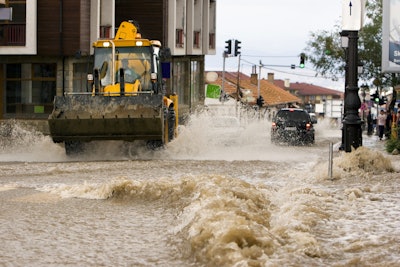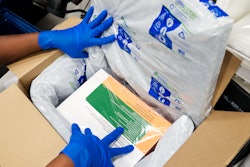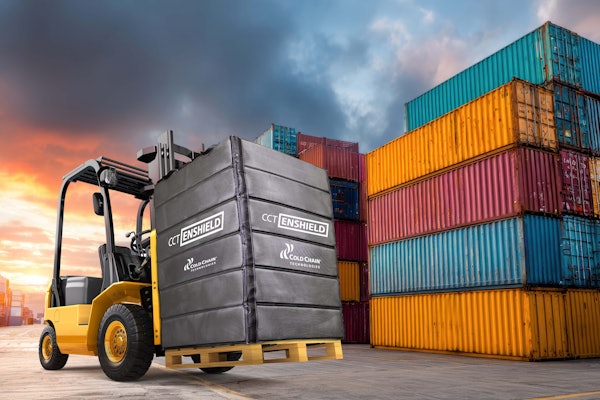Hurricane Michael is reported as the first Category 4 or stronger hurricane to make landfall in the Florida Panhandle, complete with what the The Weather Channel’s website reports as “catastrophic storm surge and destructive winds,” with a prediction that “over a million power outages will occur not just near the coast, but also inland after landfall.”
In this article, Jim Monkmeyer, President of Transportation at DHL Supply Chain, comments on content from the recent Resilience 360 report, “Hurricane Peak Season: What to Expect in 2018.”
Short-term measures:
Pre-positioning essential material and safety stocks: Hurricanes can now be forecast in advance with much greater accuracy, giving companies more time to plan mitigation efforts. By monitoring storm forecasts in real-time, companies can have advanced warning that can be used to assess potential locations and routes at risk and initiate efforts to minimize disruption. Mitigation efforts may include: increasing inventory to bridge short-term supply shortages; storing fuel reserves and back-up generators for power generation during outages; and setting up alternative communication systems such as Emergency Alert Systems (EAS), CB Radio or social networks for employees and customers.
Monkmeyer: Bottom line, supply chain managers should ask themselves, “What do we need to do to ensure business continuity?” and “Does our safety stock program make sense and is it easily accessible for fast repositioning?” These are especially important questions if your materials are sensitive to their environments, as a change in temperature or pressure for even minutes can destroy some products. You also need to think beyond “actions,” and identify a team who will spearhead these efforts—and ensure there are people who can step in if key team members are not available, or when fatigue sets in. Can you provide food and housing for these folks if necessary? Are you prepared to communicate through trade media—a valuable resource in a crisis—to inform your customers, suppliers and other vendors of the positive steps you are taking and to indicate that all is well (or not well)? These are all questions that will arise in the moment but can be answered in advance.
Drawing up business continuity plans for at-risk locations: In case of a disruption, it is essential to have a business continuity plan in place to increase the speed of disaster response. In such a plan, customers should consider addressing critical aspects like potential alternative suppliers, alternative routes to and from crucial locations, key points of contact, additional short-term transportation costs and priority shipment identification.
Monkmeyer: Continuity plans must also be tested. The time to do that is well before an event that can shut you down. Tabletop tests that involve representatives from all parties involved will expose gaps and weaknesses. Half-day or full-day drills can be a drain, but they’re not as tough as the alternative.
Long term measures:
Use mapping tools for supply chain risk assessments: Companies may consider mapping tools to create greater transparency and understand interdependencies in their supply chains. By overlaying risk exposure scores and identifying locations prone to hurricanes or flooding, companies can prioritize mitigation efforts for risky locations down to sub-tier supplier levels more effectively.
Monkmeyer: Your insurance carrier is a good resource with whom to work here; it’s in both of your best interests to fully identify risks to alleviate headaches before they become nightmares. It may also result in premium savings.
Diversify manufacturing and distribution locations: Organizations can consider mitigating operational risks by diversifying supplier, manufacturing and distribution locations, which will reduce the probability of complete production and/or distribution failure. If alternative suppliers, production and warehouse facilities lie outside of high-risk areas, customers may still be able to continue production and fulfill orders in case of a disruption. Alternative transportation routes from unaffected suppliers or warehouses should be established in advance.
Monkmeyer: While this may sound easier said than done, it’s not impossible—and certainly beats the alternative of not being able to receive, manufacture and ship products. Once established, this should fall in step with testing the business continuity plan (see item 2 in Short-term measures, above). Think beyond “normal”—for example, providing for goods that need special handling, such as temperature-sensitive products, or critical medical products upon which patients’ well-being depends.
Establish long-term partnerships with logistics suppliers: Securing logistics capacity during a disaster can be made possible through trusted relationships with logistics providers that can book capacity on charter flights to move a customer’s shipment to its final destination and from disaster areas when everybody is vying for space.
Monkmeyer: This is not the time to go it alone; you’ll have more on your plate than you imagine once a crisis kicks in. The key: finding a logistics partner(s) upon whom you can rely. Ask about experience—take some time to listen to their “war stories” and how they succeeded when the chips were down.























